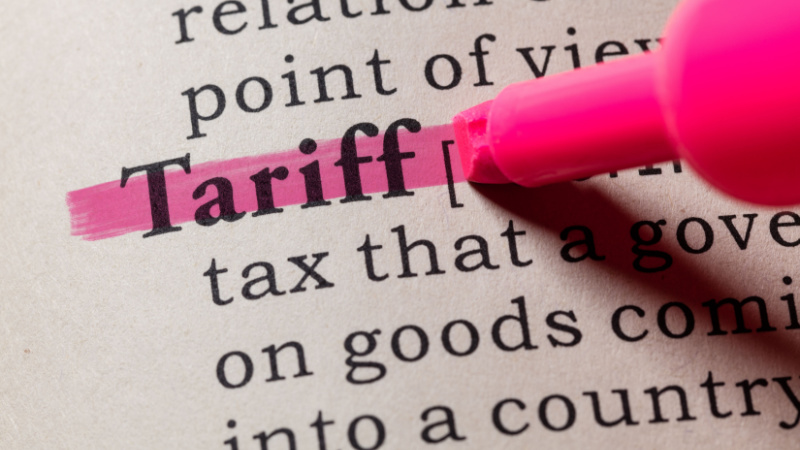Australia-China relations on a solid trajectory. But it could be derailed
May 21 2023

Note: This article appeared in The Canberra Times on May 21 2023.
Trade Minister Don Farrell took some heat last week for returning ‘empty-handed’ from his trip to Beijing and a meeting with China's Commerce Minister.
Opposition foreign affairs spokesman Simon Birmingham described the outcome as ‘not really‘ good enough and the dialogue as ‘not the type of breakthrough that will make a meaningful difference‘.
But this criticism misunderstands what's unfolding.
Most of the trade disruption measures put in place by Beijing in 2020 were informal, so there's no reason to expect a scripted announcement following each formal bilateral engagement now.
The Chinese side will want to avoid giving an impression it has emerged the loser from any negotiations. And nor does the Australian government see the national interest served by loudly proclaiming ‘victory’.
Last November, Prime Minister Anthony Albanese broke more than a three-year drought when he met with China's President Xi Jinping on the sidelines of the G20 summit in Bali. Albanese judged that simply ‘having the meeting is a successful outcome’.
The following month, Foreign Minister Penny Wong travelled to Beijing on a formal bilateral visit.
The big result was not a resolution of specific issues, but an agreement ‘to commence or restart dialogue’ across the board.
In late March, Assistant Trade Minister Tim Ayers travelled to the Boao Forum in Hainan and met with his Chinese counterpart. Ayers could also have been accused of returning ‘empty-handed’. His visit was followed in early April by a working-level delegation led by Tim Yeend, a senior official from the Department of Foreign Affairs and Trade. No joint communique was forthcoming.
Yet the following week, the two governments confirmed a process had been agreed upon that set up the potential removal of Chinese tariffs on Australian barley.
On Thursday, Farrell said he had been assured that the Chinese side's review into the tariffs was ‘well under way’ and a decision can be expected ‘in the next few weeks’.
The removal of those tariffs would then serve as a template for addressing similar tariffs on wine.
The same day, the Chinese ambassador slipped into a question-and-answer session with local media that his country's customs authorities had informed Australia's Department of Agriculture that they were satisfied previous ‘quarantine’ issues around timber had now been resolved.
The direction of travel is obvious.
And all this progress has been achieved without the Australian government making any changes to substantive policy positions or national security concessions.
In turn, this strengthens a conclusion that as much as Beijing objected to Canberra's rejection of its maritime claims in the South China Sea, the ban on Huawei, and so on, what finally tipped those disputes spilling over to hurt trade was the sidelining of diplomacy by the former Morrison government.
Morrison's aping of Donald Trump's political attacks on China over the COVID-19 pandemic in early 2020 will serve as a case study of what not to do for generations of Australian foreign policy practitioners to come.
Bolstering resilience in the Australia-China relationship today is that the two sides are re-engaging with realistic expectations.
The Chinese ambassador in Canberra, Xiao Qian, has even taken to using Wong's preferred language, speaking of a ‘stabilisation’ in the relationship. He also accepts that, ‘we do have differences ... we even have disputes’, but adds these can be addressed, ‘in a way that will not allow the differences to hijack the overall relationship with our two countries’. Wong would readily concur.
Of course, Beijing remains unhappy about AUKUS and a whole lot more. But its muted responses to a slew of Australian defense acquisition and posture announcements point to an unwillingness to let these derail thawing ties.
According to Farrell, defense and security matters weren't even raised by his Chinese interlocutors last week.
There are two fundamental issues that could hijack the current positive bilateral trajectory: Australia joining the US in trying to contain China's development and/or Canberra moving away from the One China Policy it struck with Beijing in 1972.
Neither looks likely.
In March, when asked how countries should respond to an increasingly assertive China, Australia's then ambassador in Washington, Arthur Sinodinos remarked, ‘I start from a proposition that a strong and prosperous China is in everybody's interest.’
A couple months earlier Wong told a London audience that ‘stability and prosperity are mutually reinforcing’ and that Australia sees regional economic integration as ‘an investment in our security’.
Farrell is clearly of like mind, albeit getting a bit overexcited in Beijing declaring that, ‘Nothing's going to do more to achieve peace in our region than strong trading relationships between Australia and China’.
On Taiwan, the Albanese government maintains a dogged insistence on the ‘status quo’. Wong calls on ‘all parties’ to deescalate tensions and only directs criticism at Beijing when its actions are plainly destabilising.
The Chinese side would also have been reassured when early on in the new government, Defence Minister Richard Marles put on record that, ‘We do not support Taiwanese independence’.
The latest development is that the Chinese ambassador says he wants 2023 to be the year the relationship moves beyond stabilisation to deepening cooperation. Given where the relationship is now at, it shouldn't be beyond Canberra to put some flesh on an expanding agenda.
Professor James Laurenceson is Director of the Australia-China Relations Institute at the University of Technology Sydney.

